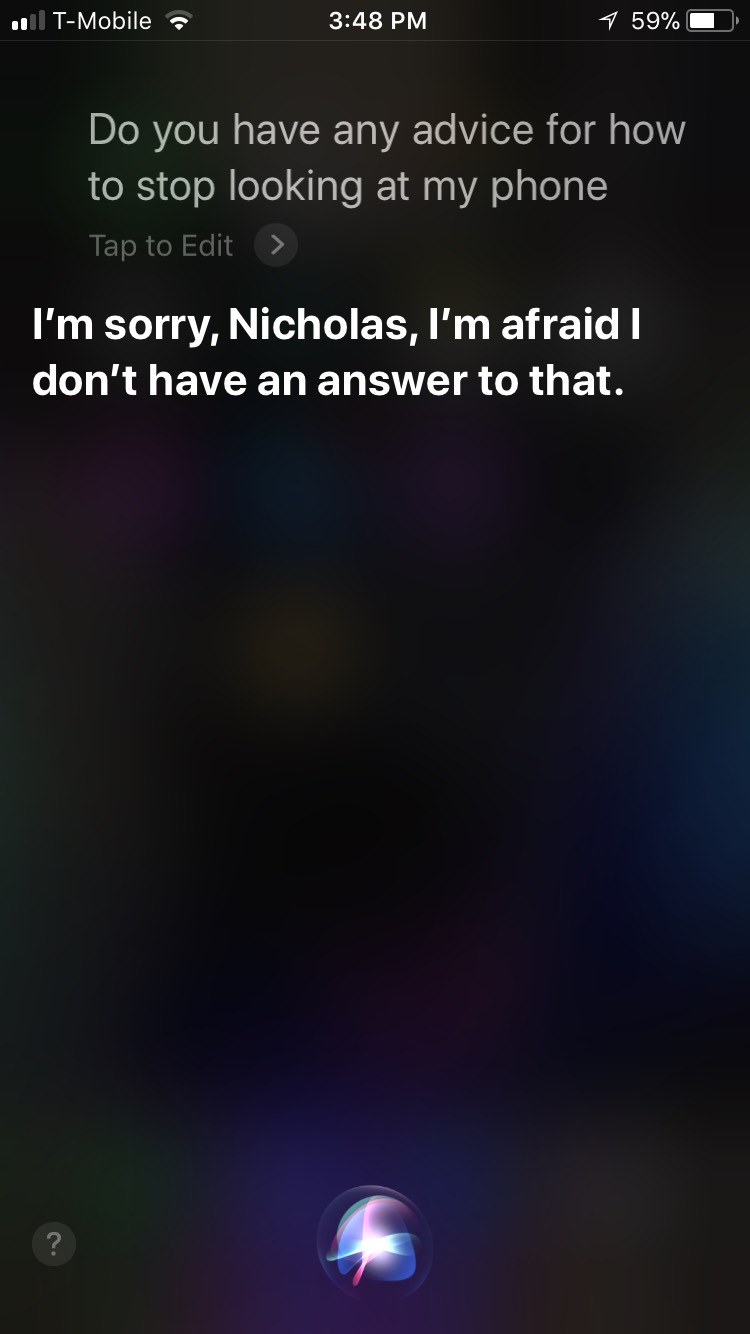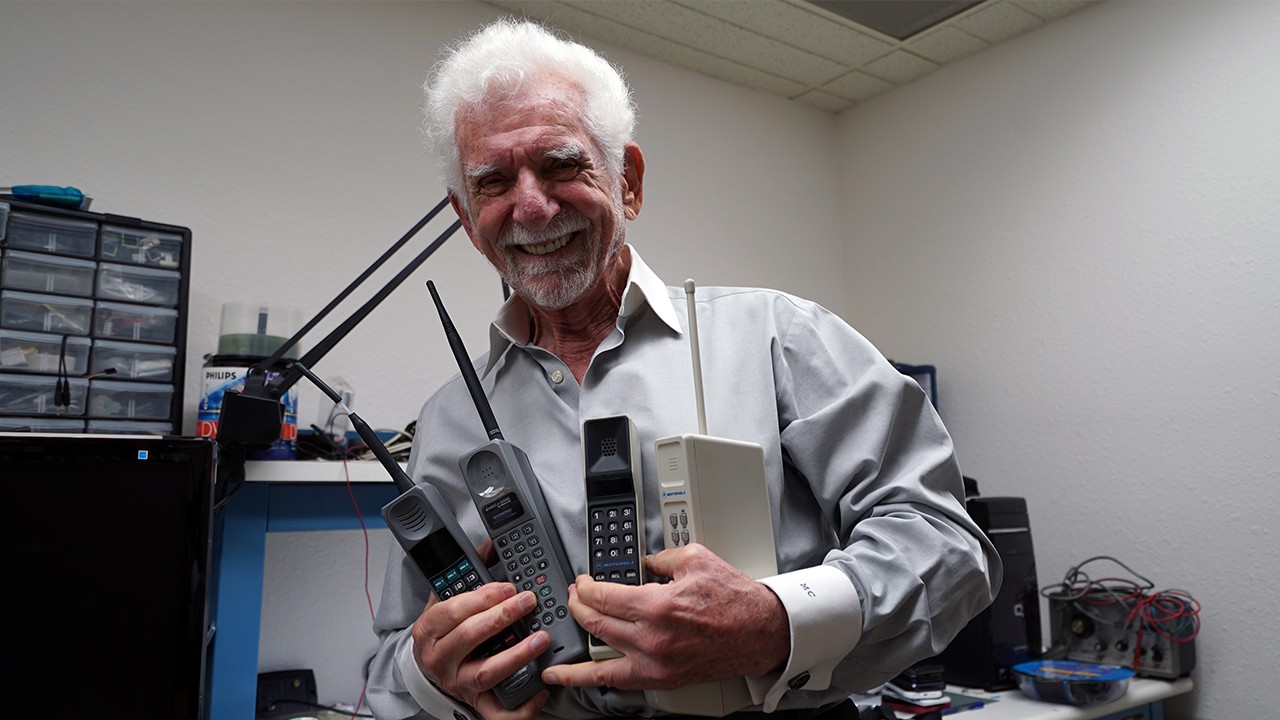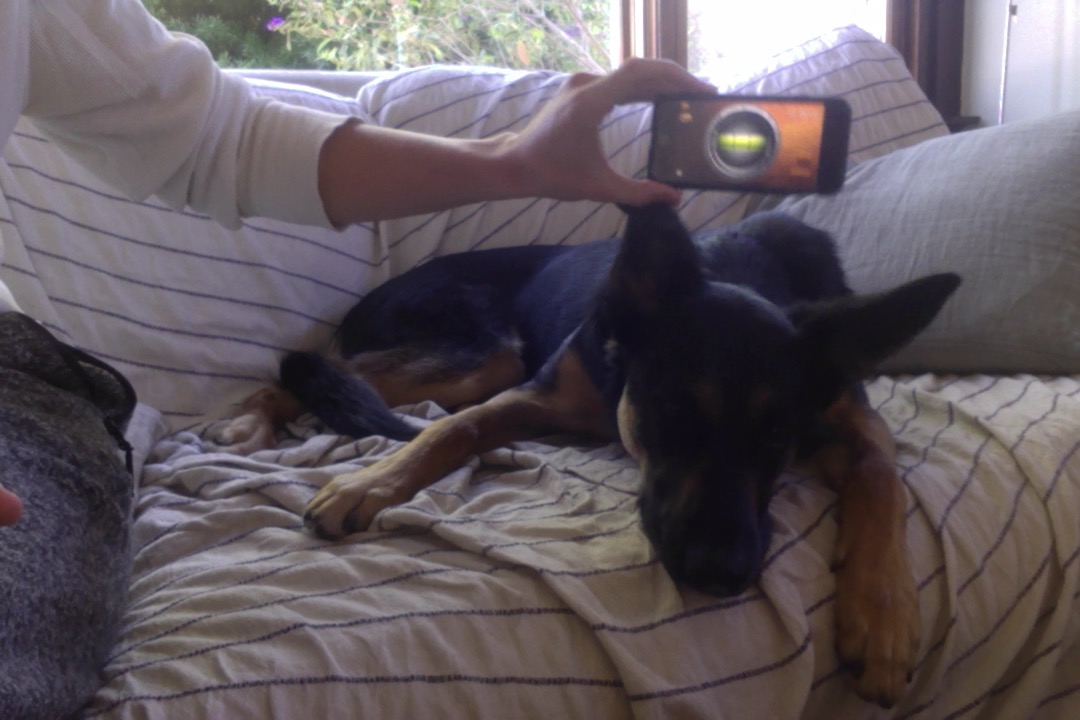Smartphones have put us in quite a pickle. These devices are explicitly designed to be addictive, but because we rely on them for so many quotidian activities and tasks, quitting cold turkey would mean forfeiting a place in modern society. It’s like if heroin was cut with the ability to check your work email.If you own a smartphone, chances are it’s affecting how you think. A recent study published in the Journal of the Association for Consumer Research says that “even when people are successful at maintaining sustained attention—as when avoiding the temptation to check their phones—the mere presence of these devices reduces available cognitive capacity.”But I don’t need a peer-reviewed journal to tell me my brain is broken. I can feel it breaking. I’d say it has turned to Play-Doh, but Play-Doh at least retains the written information it rolls across. My brain has become off-brand putty, mealy and dried-out from years of smartphone hypnosis.I really shouldn’t be so susceptible to the lure of my phone. I’m too lame for Snapchat, too slow-witted to play HQ, and too married to cruise Tinder. My temptations are extremely limited, but that doesn’t seem to matter; I find myself drooling before the screen’s glow time and time again, often without even realizing I had taken it out of my pocket in the first place.So, how does one cure smartphone addiction? To find out, I asked my phone, as it surely has my best interests in mind. If my phone—the device I keep near at all times, the last thing I look at before I fall asleep and the first thing I gaze upon after I wake—doesn’t have an answer for how to wean myself from its liquid crystal display, then where can I turn for guidance? The App Store, naturally.So many of the recommended treatments for smartphone addiction come in the form of smartphone apps. It’s called fighting fire with fire, which is why firefighters always show up at burning buildings with flamethrowers.I tried Forest, the most popular productivity app for iOS. To use it, you click a button that plants a little virtual tree. The longer you stay away from your phone, the bigger the tree becomes, and the goal is to make your tree grow as big as possible. There is one major flaw, however. I didn’t give a shit about my tree. I’m from the generation that gleefully watched our Tamagotchis starve to death. A sad little virtual tree isn’t going to move the needle. Despite this, and despite the fact that it costs $1.99, Forest has a solid five-star rating. It’s anyone’s guess how, exactly, all those reviewers managed to rate the app without stunting the growth of their little trees. Life finds a way, I guess.After that failure, I tried following the New York Times’ advice and made my screen grayscale. I have terrible eyes that get worn down by my phone’s normal vibrancy, so all this trick did was make it easier to look at. Had I not changed it back to full color, I don’t think I would have ever been able to look away.
If my phone—the device I keep near at all times, the last thing I look at before I fall asleep and the first thing I gaze upon after I wake—doesn’t have an answer for how to wean myself from its liquid crystal display, then where can I turn for guidance? The App Store, naturally.So many of the recommended treatments for smartphone addiction come in the form of smartphone apps. It’s called fighting fire with fire, which is why firefighters always show up at burning buildings with flamethrowers.I tried Forest, the most popular productivity app for iOS. To use it, you click a button that plants a little virtual tree. The longer you stay away from your phone, the bigger the tree becomes, and the goal is to make your tree grow as big as possible. There is one major flaw, however. I didn’t give a shit about my tree. I’m from the generation that gleefully watched our Tamagotchis starve to death. A sad little virtual tree isn’t going to move the needle. Despite this, and despite the fact that it costs $1.99, Forest has a solid five-star rating. It’s anyone’s guess how, exactly, all those reviewers managed to rate the app without stunting the growth of their little trees. Life finds a way, I guess.After that failure, I tried following the New York Times’ advice and made my screen grayscale. I have terrible eyes that get worn down by my phone’s normal vibrancy, so all this trick did was make it easier to look at. Had I not changed it back to full color, I don’t think I would have ever been able to look away. To get an idea about the severity of my smartphone dependence, I downloaded Checky. It is probably the worst app I’ve ever used. All Checky does is tell you how many times you’ve looked at your phone. While you could do this with a pen and a pad of paper, Checky needs to be on and running in the background in order to work. It tracks your location for some reason, meaning the app is constantly (and suspiciously) using your device’s GPS.Checky is like a bouncer with one of those little clicky things to monitor crowd size, but, unlike bouncers, it can’t break up fights or throw sand on sidewalk vomit. It also can’t do what it was designed for, and didn't keep me off my phone.Unlike Forest, which incentivizes keeping your phone out of sight, Checky seems to do the opposite. (After all, the programmers wouldn’t have made room for banner ads if they thought no one would look at the app.) When I opened it late this morning it read “47,” meaning that was the 47th time I had looked at my phone since downloading Checky the day before. Unless you are an avid golfer or suffer from hypertension, you’ve probably been conditioned to value high scores. That’s why, upon checking it again 45 minutes later, I felt a burst of pride when I saw “67.”In a sense, this is what apps are explicitly designed to do. We know this because many of the men and women behind them have sounded the alarm. Loren Brichter, the designer of Twitter’s pull-to-refresh feature, told the Guardian about his regrets. “Pull-to-refresh is addictive,” he said, “Twitter is addictive. These are not good things.”Facebook engineers who developed the “like” button have been outspoken about the dangers of their creation, and former Google designer Tristan Harris now gives TED Talks about technology’s potent psychosocial effects. Silicon Valley is full of Dr. Frankensteins who have watched in horror as their monsters crawled from the operating tables and into town. (“But the monster was good in that story,” you may say. "It was the people who were cruel!” You are probably right, but all the specifics and nuance I had gleaned from that book back in middle school have been completely washed away thanks to years of smartphone use.)Adding software to my phone was clearly not the answer, so I took the opposite tack and deleted Twitter and Instagram, the apps I use the most. This fix just led me to my laptop where I mindlessly scrolled through the browser-based versions of those social networks. When away from the computer, apps I had long since forgotten about started to command my attention. I found myself looking up hotel rates when I had no travel plans or using the level app I downloaded ages ago and never used to determine how flush my dog’s ears are.
To get an idea about the severity of my smartphone dependence, I downloaded Checky. It is probably the worst app I’ve ever used. All Checky does is tell you how many times you’ve looked at your phone. While you could do this with a pen and a pad of paper, Checky needs to be on and running in the background in order to work. It tracks your location for some reason, meaning the app is constantly (and suspiciously) using your device’s GPS.Checky is like a bouncer with one of those little clicky things to monitor crowd size, but, unlike bouncers, it can’t break up fights or throw sand on sidewalk vomit. It also can’t do what it was designed for, and didn't keep me off my phone.Unlike Forest, which incentivizes keeping your phone out of sight, Checky seems to do the opposite. (After all, the programmers wouldn’t have made room for banner ads if they thought no one would look at the app.) When I opened it late this morning it read “47,” meaning that was the 47th time I had looked at my phone since downloading Checky the day before. Unless you are an avid golfer or suffer from hypertension, you’ve probably been conditioned to value high scores. That’s why, upon checking it again 45 minutes later, I felt a burst of pride when I saw “67.”In a sense, this is what apps are explicitly designed to do. We know this because many of the men and women behind them have sounded the alarm. Loren Brichter, the designer of Twitter’s pull-to-refresh feature, told the Guardian about his regrets. “Pull-to-refresh is addictive,” he said, “Twitter is addictive. These are not good things.”Facebook engineers who developed the “like” button have been outspoken about the dangers of their creation, and former Google designer Tristan Harris now gives TED Talks about technology’s potent psychosocial effects. Silicon Valley is full of Dr. Frankensteins who have watched in horror as their monsters crawled from the operating tables and into town. (“But the monster was good in that story,” you may say. "It was the people who were cruel!” You are probably right, but all the specifics and nuance I had gleaned from that book back in middle school have been completely washed away thanks to years of smartphone use.)Adding software to my phone was clearly not the answer, so I took the opposite tack and deleted Twitter and Instagram, the apps I use the most. This fix just led me to my laptop where I mindlessly scrolled through the browser-based versions of those social networks. When away from the computer, apps I had long since forgotten about started to command my attention. I found myself looking up hotel rates when I had no travel plans or using the level app I downloaded ages ago and never used to determine how flush my dog’s ears are. Rather than freeing myself to embrace the outside world, I dove deeper into the recesses of my phone. I fiddled with these hitherto unused apps with alarming dedication. This, combined with Checky’s relentless GPS-aided battery drain, bled my device dry. Come late afternoon, the screen flashed the death knell of a blood-red power icon and went dark.I was free so long as I could resist charging it. With no apps to scroll through or poke, I went to the dog park with the dead weight of my device tugging at my pocket. The low sun cast long, beautiful shadows across the dirt—a jagged skyline that would have gone unnoticed had I been looking at my phone. Birds flew in formation overhead and branches creaked in the wind.Oh God, I thought, what if someone’s trying to text me right now?Sign up for our newsletter to get the best of VICE delivered to your inbox daily.Follow Nick Greene on Twitter.
Rather than freeing myself to embrace the outside world, I dove deeper into the recesses of my phone. I fiddled with these hitherto unused apps with alarming dedication. This, combined with Checky’s relentless GPS-aided battery drain, bled my device dry. Come late afternoon, the screen flashed the death knell of a blood-red power icon and went dark.I was free so long as I could resist charging it. With no apps to scroll through or poke, I went to the dog park with the dead weight of my device tugging at my pocket. The low sun cast long, beautiful shadows across the dirt—a jagged skyline that would have gone unnoticed had I been looking at my phone. Birds flew in formation overhead and branches creaked in the wind.Oh God, I thought, what if someone’s trying to text me right now?Sign up for our newsletter to get the best of VICE delivered to your inbox daily.Follow Nick Greene on Twitter.
Advertisement
Advertisement

Advertisement
Advertisement